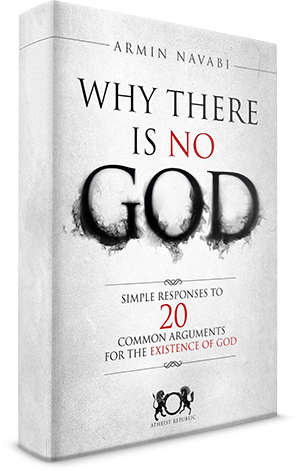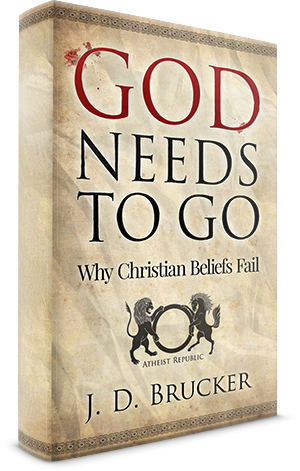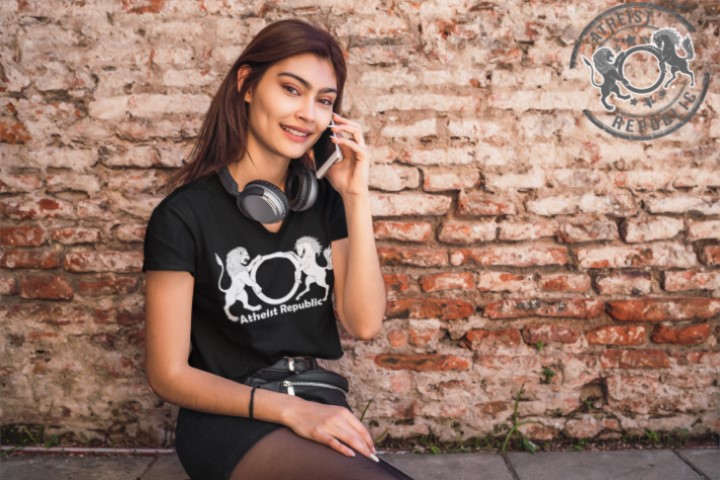Brain Buster
Donating = Loving
![]()
Bringing you atheist articles and building active godless communities takes hundreds of hours and resources each month. If you find any joy or stimulation at Atheist Republic, please consider becoming a Supporting Member with a recurring monthly donation of your choosing, between a cup of tea and a good dinner.
Log in or create an account to join the discussions on the Atheist Republic forums.




























Both players start with a piece of paper, 1326 possible hands.
When they test the hands, based on the result, they erase the hands they can't possibly have.
The remaining number of hands listed will be different. YES! I GOT IT. I DON'T LIKE IT. IT SEEMS COUNTER INTUITIVE.
I really hate that you seem right and I am wrong. I think we are using Fuzzy Math.
*** The remaining number of possible hands will be different *** Only if you combine Bob's possible outs. (This is the problem.)
Ahhh! Got it....
It appears to me a dishonest trick of math to compute all of Bobs possible hands. Once Bob's wand goes off, we know he has one queen. Once Alice's wand goes off, we know she has one queen. It only appears that Bob has more outs. In fact, he does not.
If he has the Q of Hearts, his chances are exactly the same as Alices
If he has the Q of Diamonds his chances are exactly the same.
ETC, ETC.... Adding up Bob's possible outs appears dishonest. (Fact, He has at least one queen, the same as Alice, once the detector goes off.)
In each case of "Can't possibly have." Bob's hand must be judged based on the fact that he holds one queen. Each queen hand is separate from all other possible queen hands. They can not be combined as he holds only "one' option. Combining them appears to be a dishonest math trick.
WHAT DO YOU THINK?
This reminds me of" "Three guests check into a hotel room. The manager says the bill is $30, so each guest pays $10. Later the manager realizes the bill should only have been $25. To rectify this, he gives the bellhop $5 as five one-dollar bills to return to the guests.
On the way to the guests' room to refund the money, the bellhop realizes that he cannot equally divide the five one-dollar bills among the three guests. As the guests aren't aware of the total of the revised bill, the bellhop decides to just give each guest $1 back and keep $2 as a tip for himself, and proceeds to do so.
As each guest got $1 back, each guest only paid $9, bringing the total paid to $27. The bellhop kept $2, which when added to the $27, comes to $29. So if the guests originally handed over $30, what happened to the remaining $1?
There seems to be a discrepancy, as there cannot be two answers ($29 and $30) to the math problem. On the one hand it is true that the $25 in the register, the $3 returned to the guests, and the $2 kept by the bellhop add up to $30, but on the other hand, the $27 paid by the guests and the $2 kept by the bellhop add up to only $2"
It really does
I won't even pretend I knew the answer... lol
OK, I'll have a go at this, without looking at other people's answers.
The probability of being dealt a specific card as the first card, is 1/52. The probability of being dealt a specific card as the second card, if the first card wasn't that specific card, is 1/51. Therefore, the probability of being dealt the queen of hearts in your two card hand, regardless of the identity of the other card, is (1/52)×(1/51).
The probability of being dealt one of the four queens as the first card, is 4/52. The probability of being dealt one of the remaining three queens as the second card, is 3/51. The probability of being dealt any two queens is therefore (4/52)×(3/51) = 12/(52×51).
The probability of being dealt the queen of hearts and one other queen, is the probability of the following two events combined:
[1] Queen of hearts first, then another queen = (1/52)×(3/51)
[2] Any other queen first, then queen of heards, = (3/52)×(1/51)
Therefore the probability of this outcome = (1/52)×(3/51) + (3/52)×(1/51) = 6/(52×51).
I therefore conclude, as my first attempt, that Bob is more likely to have two queens in his hand than Alice.
I now await the inevitable BZZZZT ... :D
I tried calculating it two ways:
----------------------------------------------------------
By the compliment:
the probability of getting NOT getting 1 Q♥ with 2 cards is:
51/52 * 50/51 = 50/52 = 25/26
the complement of that (the probability of getting 1 Q♥ on two cards) is: 1 - 25/26 = 1/26
----------------------------------------------------------
Conditionally:
It can happen two ways (first or second card is Q♥)
First way:
Second way:
(probability the first card is NOT the Q♥) * (given first card is not Q♥, the probability the 2nd card is the Q♥)- Give us 51/52 * 1/51 = 1/52
Since it can happen in two ways, we should sum the probability of each of the ways.
That is just 1/52 + 1/52 = 2/52 = 1/26.
https://www.youtube.com/watch?v=TGukPgViEkg
Counter intuitive bullshit. Pisses me off!
Nice puzzle ... The link is a shorter version explained.
@Nyarlathotep: It's really weird math.
Given your scenario above. Alice waves her wand and knows she has the Queen of Hearts. Bob waves his wand and knows he has a queen. Suit unknown.
Bob looks at his card and discovers it is the Queen of Spades. Now the odds are exactly equal again. The act of looking, knowing one card, can effect the odds .
Am I wrong? (It seems like weird math. Why should knowing one card effect the odds of catching the second queen?) If Bob looks, Like Alice, he can eliminate all hands that are not two queens. The cards do not change but the odds do change. Am I missing something?
The trap here is the adding of the $2 to the $27. Mathematically there is nothing wrong with adding two amounts of (the same) currency together, but what is that sum supposed to represent?
Imagine I started with 100 dollars and my 2 niece started with 0 dollars each; then I gave them $90 (one got $50 and the other $40). It would very obvious I was doing something wrong if I was trying to account for all the money in the system by adding $90 I paid to the $40 that one of the nieces got. The reason this is obvious to us is because clearly $90 + $40 is considerably more currency than we already know exists, so it's painfully clear we have done something wrong. In the example you gave with the hotel and bellhop, it wasn't so obvious that this was a mistake because the sum is less than the amount of currency we know is in the system. And that is what makes your example a great brain buster.
Given your example, imagine I said the following (a modified version of what you said):
If it had been phrased this way, it would be much more obvious (imo) that adding those values together doesn't make a lot of sense.
Yes. It's true each man paid $10. Then each man got $1 back. In total they paid $27 for the room. But you can not add their $27 to the $2 the bell hop has. The $2 the bell hop has is part of the $27 they paid for the room. The desk has $25 and the bell hop has $2 for a total of $27, Exactly what the men paid. The hotel is short $2 not the men. The wrong sums are added to each other.
The above one reminds me of a simple counting trick that I love to pull on kids that have a sense of humour. (Easy to figure out, but usually there is a moment of "what the.. ffff??"
I have 11 fingers! Want to count them?
1, (straighten the thumb)
2, (straighten the pointer finger)
Save these 3 for later. (skip 3 fingers remaining on hand)
4, (thumb on other hand)
5,
6,
7,
8,
Okay back to the three I saved for later.
9,
10,
11!!!
Obviously written out it is extremely easy to spot, but it is a bit of fun done out loud to an audience.
Pages